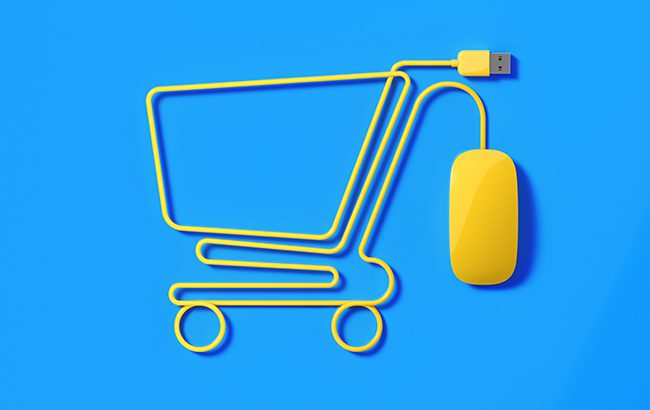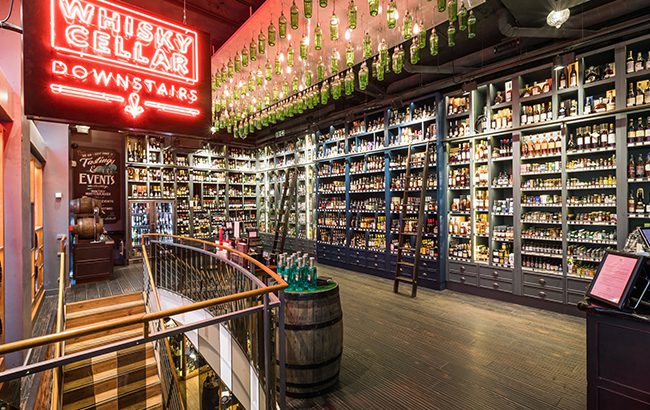The challenges facing alcohol e-commerce
E-commerce is becoming an increasingly important way of reaching consumers, as shoppers seek convenience and choice. We speak to industry insiders about the future of the online sector.

Online drinks sales rocketed during the pandemic, as bars were forced to close, leaving retail as consumers’ only source for purchasing alcohol. Major e‐commerce investments in the US and Europe have also been made by alcohol conglomerates as they look to cash in on this potentially lucrative part of the spirits market. However, as consumers head back into stores and the on‐trade, that growth is slowing, as shown by new data.
“Having surged over the past few years, e‐commerce alcohol sales are forecast to flatten in 2022, as pre‐pandemic buying habits re‐establish themselves to some extent,” said Guy Wolfe, strategic insights manager, IWSR Drinks Market Analysis. “Growth is set to resume, but at a lower rate than previously expected, due to a weaker macroeconomic outlook.”
E-commerce alcohol sales in 16 markets are predicted to grow by 34% to reach nearly US$40 billion by 2026, according to IWSR’s latest data.
In the UK, online sales of beers, wines and spirits fell by 20.6% in August versus the same period last year, according to the latest Interactive Media in Retail Group (IMRG) Capgemini Online Retail Index.
“Usually, the amount of money spent online increases and decreases in line with activity retailers are undertaking, but in July and August we recorded five weeks of decline, which is rare; there will need to be a great deal of sales growth to make up for Black Friday [discounts], and peak to be positive,” said Andy Mulcahy, IMGR strategy and insight director at the time.
The Whisky Exchange has also noticed a slower growth rate compared with last year, but consumers appear to be spending more.
“In the year to date, total sales, we’re looking at about a 5% rise currently, which is what we would expect around this time of year as our busiest trading period approaches,” said founder Sukhinder Singh.
“And while this growth isn’t the same rate we saw in the previous year, we are seeing a continued increase in average order values (up by 21% year on year) and spend per bottle, indicating that customers are continuing to trade up and buy better. We are interested to see how this shift plays out over the next year or so.”
Wolfe said growth in alcohol e‐commerce would continue to be driven by the US and China. In 2020, the IWSR predicted the US would overtake China as the biggest online alcohol market by 2021, but this is no longer the case due to major changes worldwide, according to Wolfe.
The US will “generate the most additional value in coming years”, while China will maintain its leading position, he said. “The rapid recent growth of e‐ commerce alcohol in the US was largely triggered by the Covid pandemic, which forced consumers online and raised awareness of the channel,” he explained.
“The ongoing expansion of the online channel was expected to be supported by a long‐term shift in consumer shopping behaviour, strong continued investment on the part of brand owners and retailers, and further easing of regulations.
“But while future e‐commerce expansion will still be strong in the US, expectations are now being dampened by the war in Ukraine, a weakening economy, high inflation and the cost‐of‐living crisis. By contrast, e‐commerce alcohol is more established in China, and growth has been more structural and less Covid‐dependent.”
Wolfe noted the value of the US online alcohol market is still only two‐thirds the size of China’s, as of 2021. “E‐commerce share of off‐trade is much lower, and the online consumer base is less mature, meaning there is more room for future growth,” he added.

Rapid development
Underdeveloped e‐commerce markets such as Mexico and Nigeria are expected to experience more rapid development, albeit from a lower base, Wolfe said.
There has been a flurry of investment in the e‐commerce channel in recent years, particularly in the US. In 2021, ride‐sharing platform Uber spent US$1.1 billion on the acquisition of alcohol‐delivery app Drizly, while Reservebar bought Minibar. In 2020, delivery site Gopuff bought retail chain Bevmo for US$350m.
In Europe, major alcohol firms have also made significant moves in the industry. Last year, France’s Pernod Ricard acquired The Whisky Exchange, and in 2020 Campari Group bought a 49% stake in Italy’s Tannico – a move that has since evolved into a joint venture with Moët Hennessy to turn the wine‐and‐spirits platform into a major e‐ commerce player in Europe.
Last week, Campari Group and Moët Hennessy jointly acquired the remaining stake in Tannico, claiming full ownership of the e-commerce site.
The IWSR’s Wolfe said of the deals: “Buying e‐commerce platforms offers brands a fresh distribution channel, as well as a source of valuable insight into their target consumers, such as consumer behaviour and drivers and profiling of the wider market.”
The Whisky Exchange is focused on driving growth in Europe, where demand for quality spirits is “ever‐growing”, said Singh. “An increased presence of European customers at our annual Whisky Show in London is testament to this. Shipping to EU states has been complex since Brexit, so we’re focusing on finding solutions to this.”
The Whisky Exchange is “constantly evolving” its technical proficiencies to drive growth, Singh added. “There are almost daily advances in technological capabilities so we need to stay on top of that to ensure we are offering our customers the best possible experience. Also, we are dedicating more time to analysing data to gain a better understanding of our customers and their journey with us.”
The CEO of Campari Group, Bob Kunze‐Concewitz, said the company’s “biggest exposure to e-commerce is in the UK, with 10% of our sales coming from the channel”.
This is followed by the US, where “market share of e-commerce ranges from double to triple digits”, he said. The three‐tier system in the US means “manufacturers and owners cannot become involved” in the online alcohol space, Kunze‐ Concewitz explained, with the group “working closely with leading players”.
However, Wolfe notes the “weaker economic climate and surging interest rates mean brands and retailers may be less able to invest in increasing their e-commerce capabilities in the coming months or years”. He cited challenges such as “increasingly difficult trading conditions, and the ability to fulfil super‐fast delivery promises”.
Wolfe added: “Balancing investment between the returning on‐trade and keeping momentum in e-commerce (which will continue to gain share of the off‐trade) will be a challenge for brand owners.”
Related news
Two Stacks: relevance essential for driving growth
